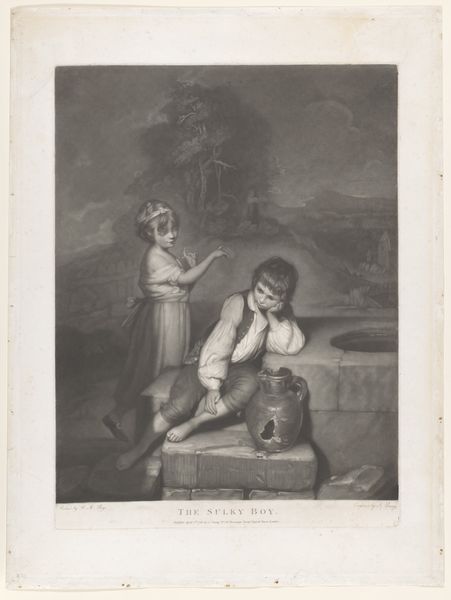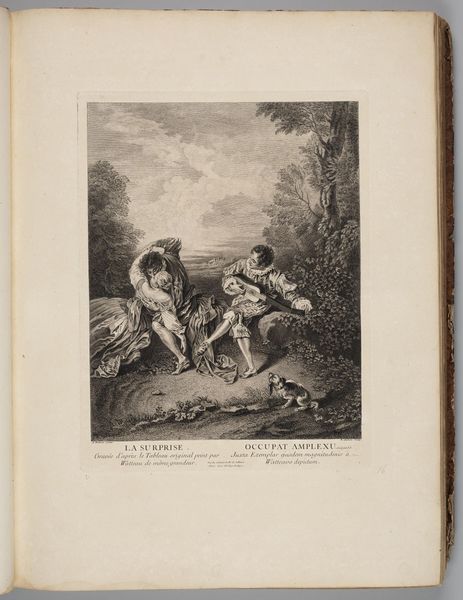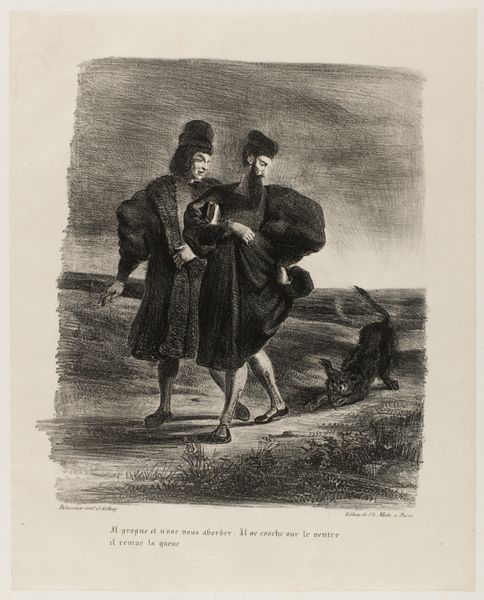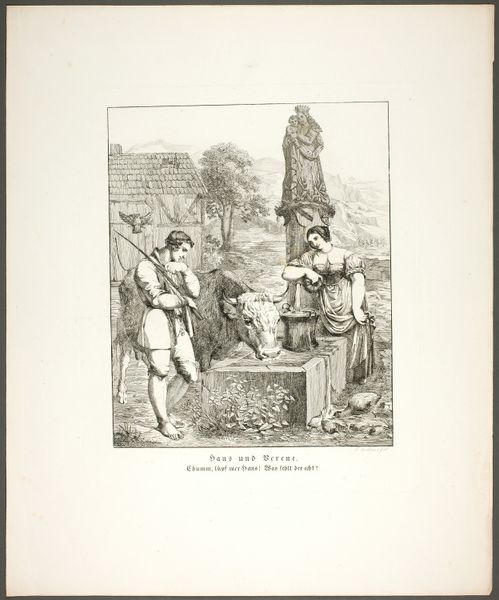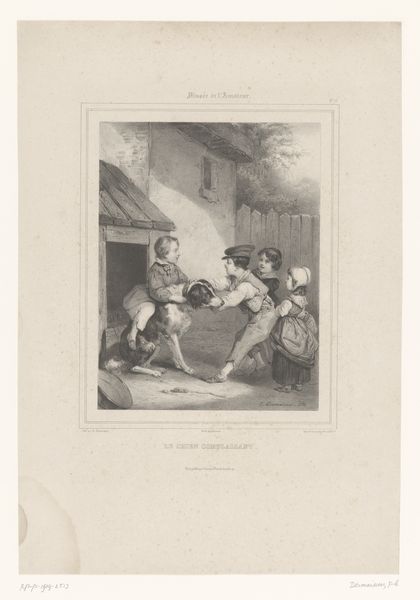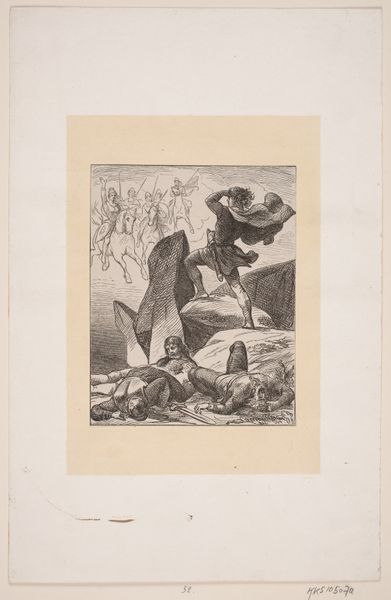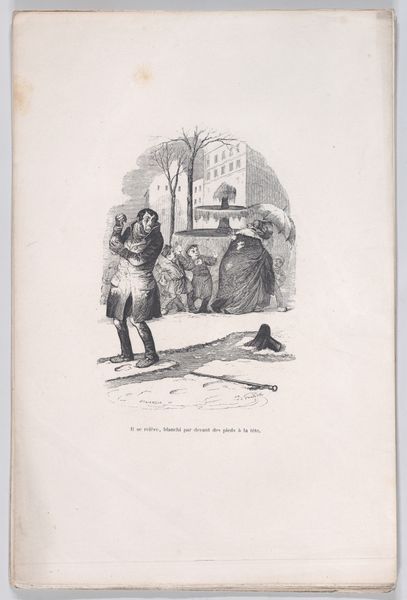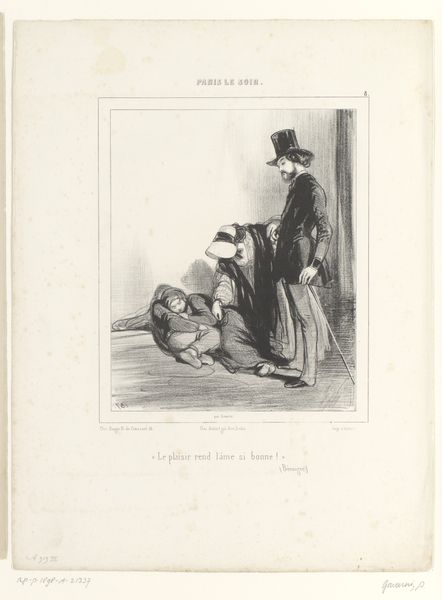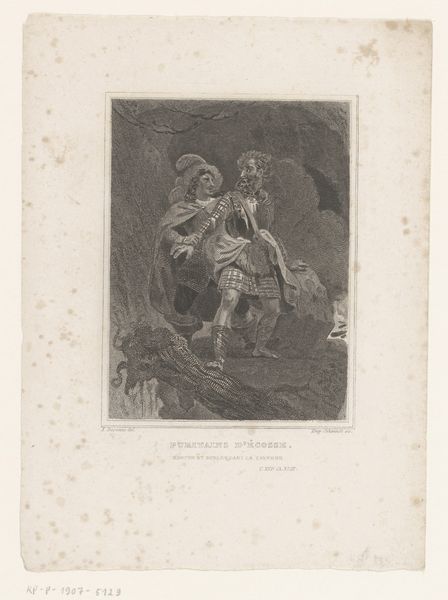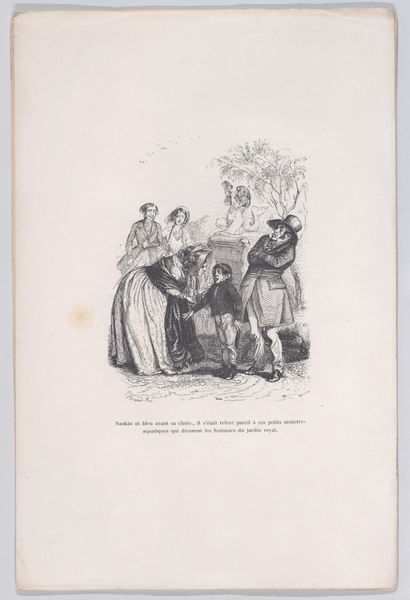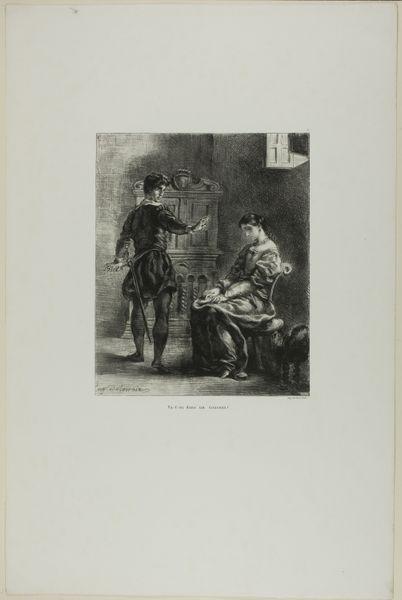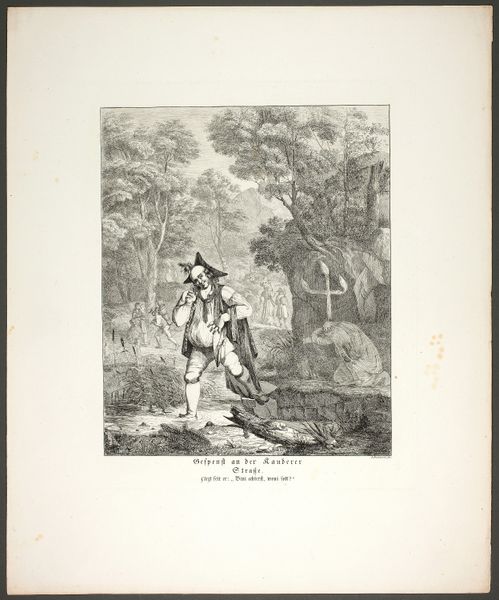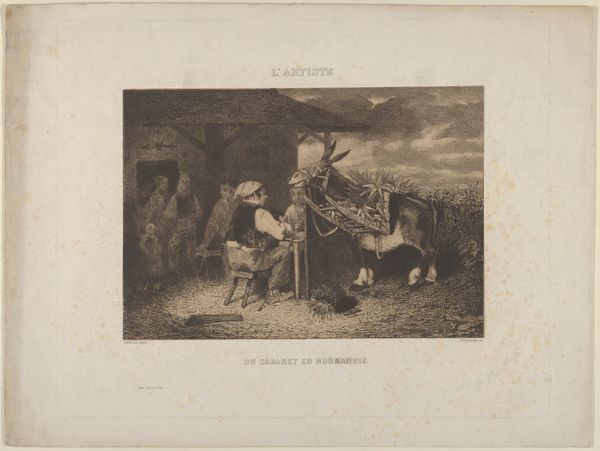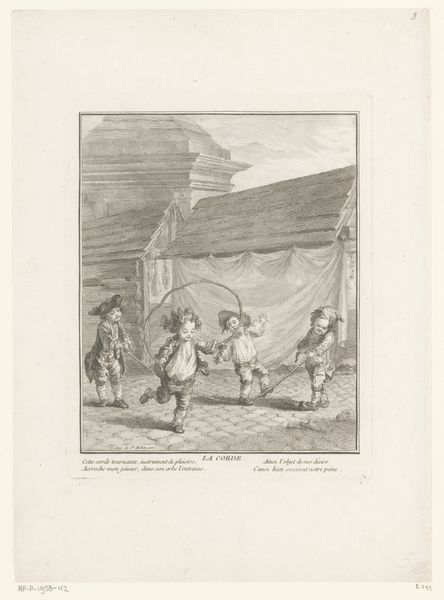
drawing, print, etching
#
drawing
# print
#
etching
#
romanticism
#
men
#
history-painting
Dimensions: Image: 12 9/16 × 9 7/8 in. (31.9 × 25.1 cm) Sheet: 19 3/4 × 13 7/8 in. (50.2 × 35.2 cm)
Copyright: Public Domain
Curator: Eugène Delacroix created this etching, titled "Macbeth Consulting the Witches", around 1825. It's based, of course, on the famous scene from Shakespeare's Macbeth, and we have the play title reproduced just under the scene. Editor: Immediately, what strikes me is how dark and tumultuous this image is. The frenzied energy seems almost claustrophobic. Curator: Yes, and that mood is partly conveyed through Delacroix’s skillful handling of the etching process. If we consider the historical context, it shows his engagement with Romanticism, prioritizing emotional intensity over strict naturalism. The dense cross-hatching and dramatic lighting amplify the supernatural horror of the scene. He had a profound engagement with the world of theatre, as well. Editor: It's interesting to think about this as a Romantic reimagining of gender and power. Macbeth stands stoic, yet almost vulnerable. And the witches are not just crones, they’re powerful figures stirring a cauldron of fate, literally brewing Macbeth’s future, the dynamics here are almost seductive. The very deliberate rendering, with dense areas of shade, and light is alluding to both the ambiguity of the witches prophecies. How might this representation reinforce stereotypes, and which might they subvert? Curator: I would push back gently on seductive! I read the figures as being far more sinister and corruptive forces—leading Macbeth to his eventual downfall. His own ambitions, inflamed by the witches' prophecy, becomes his undoing. So the picture may underscore Shakespeare’s themes about ambition and the consequences of defying moral boundaries within Jacobean society. Consider this: images like this one from Delacroix become vital historical artifacts, reflecting artistic and intellectual interests during France’s Bourbon Restoration. Editor: Delacroix uses art as a conduit for both personal exploration, and also commenting on a very contemporary political context, drawing parallels between historical power struggles in Macbeth. I’m grateful for your additional commentary. Curator: Thank you. These visual dialogues really give us insight to art of the period and it's relation to society.
Comments
No comments
Be the first to comment and join the conversation on the ultimate creative platform.
